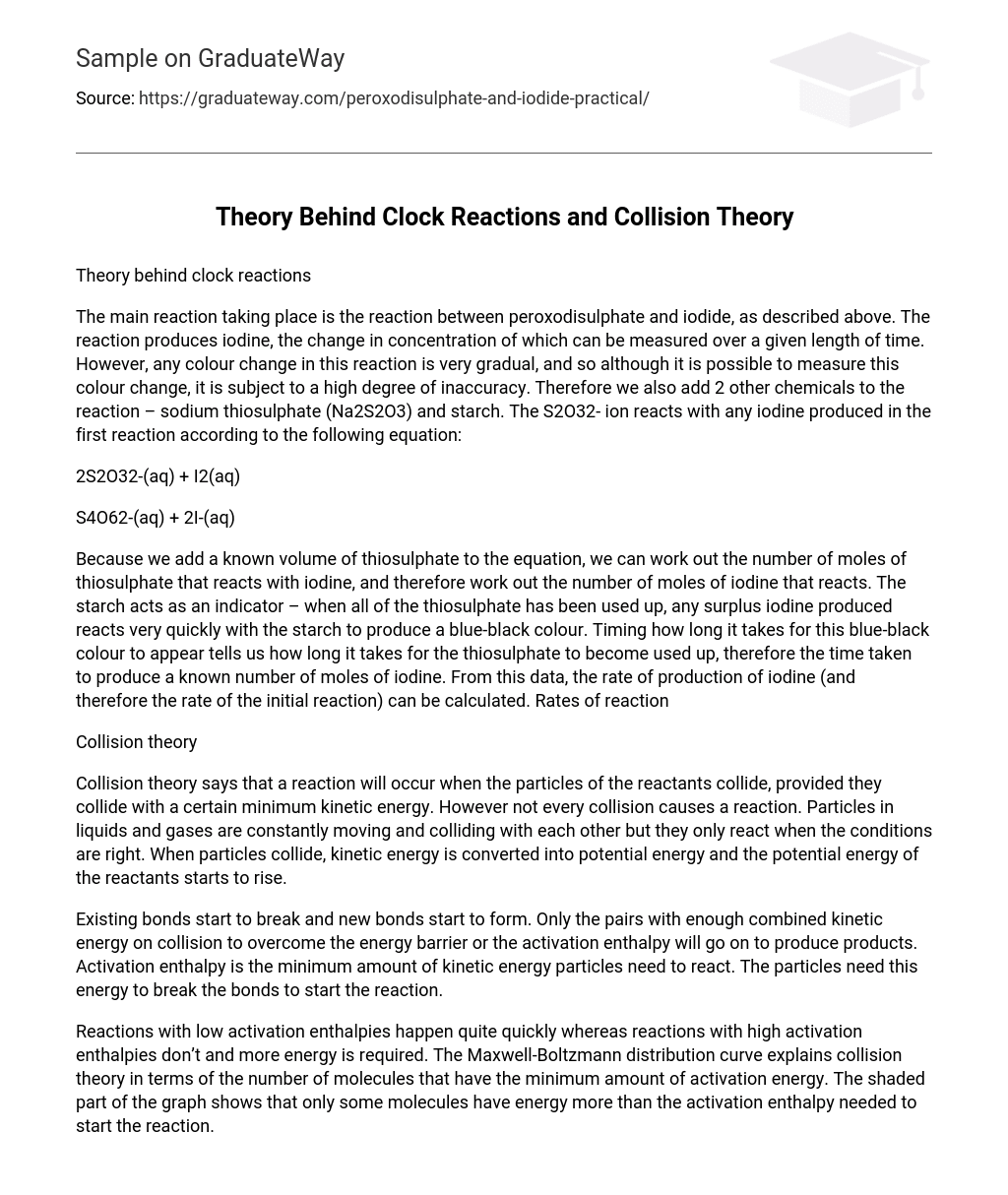Theory behind clock reactions
The main reaction taking place is the reaction between peroxodisulphate and iodide, as described above. The reaction produces iodine, the change in concentration of which can be measured over a given length of time. However, any colour change in this reaction is very gradual, and so although it is possible to measure this colour change, it is subject to a high degree of inaccuracy. Therefore we also add 2 other chemicals to the reaction – sodium thiosulphate (Na2S2O3) and starch. The S2O32- ion reacts with any iodine produced in the first reaction according to the following equation:
2S2O32-(aq) + I2(aq)
S4O62-(aq) + 2I-(aq)
Because we add a known volume of thiosulphate to the equation, we can work out the number of moles of thiosulphate that reacts with iodine, and therefore work out the number of moles of iodine that reacts. The starch acts as an indicator – when all of the thiosulphate has been used up, any surplus iodine produced reacts very quickly with the starch to produce a blue-black colour. Timing how long it takes for this blue-black colour to appear tells us how long it takes for the thiosulphate to become used up, therefore the time taken to produce a known number of moles of iodine. From this data, the rate of production of iodine (and therefore the rate of the initial reaction) can be calculated. Rates of reaction
Collision theory
Collision theory says that a reaction will occur when the particles of the reactants collide, provided they collide with a certain minimum kinetic energy. However not every collision causes a reaction. Particles in liquids and gases are constantly moving and colliding with each other but they only react when the conditions are right. When particles collide, kinetic energy is converted into potential energy and the potential energy of the reactants starts to rise.
Existing bonds start to break and new bonds start to form. Only the pairs with enough combined kinetic energy on collision to overcome the energy barrier or the activation enthalpy will go on to produce products. Activation enthalpy is the minimum amount of kinetic energy particles need to react. The particles need this energy to break the bonds to start the reaction.
Reactions with low activation enthalpies happen quite quickly whereas reactions with high activation enthalpies don’t and more energy is required. The Maxwell-Boltzmann distribution curve explains collision theory in terms of the number of molecules that have the minimum amount of activation energy. The shaded part of the graph shows that only some molecules have energy more than the activation enthalpy needed to start the reaction.





